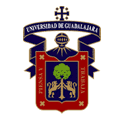Masters Degrees, Graduate Studies and Professional Programs in Mexico

Benemérita Universidad Autónoma de Puebla, BUAP
Puebla, Mexico
The Benemérita Universidad Autónoma de Puebla (BUAP) is the oldest and largest university in Puebla, Mexico. It was established in 1587 to currently offer more than 300 undergraduate and postgraduate programs. These are organized into 4 areas: The Social Sciences and Humanities Area, The Natural Sciences and of Health, The Economic-Administrative Area and The Engineering and Exact Sciences Area. All of the school’s academic programs are certified by an external institution.

ITESM Mexico City Campus
Tlalpan, Mexico
ITESM (Tecnológico de Monterrey), is an institution of higher learning based in Monterrey, Mexico, focusing primarily on the fields of science and technology. With its commitment to students, their families, their employees and the community, the university operates within the framework of their institutional mission: “forming leaders and entrepreneurs who are internationally competitive and who use their talents to benefit the communities in which they live and work.”
As part of ITESM’s renewed commitment to strengthen their organizational culture, the university has... See full description.

Universidad de Guadalajara
Guadalajara, Mexico
The University of Guadalajara is a public institution, located in Guadalajara, Jalisco – Mexico. Established in 1791, it is the second oldest university in Mexico. It is considered to be one of the most significant universities in Mexico, and is undergoing a process of constant improvement. The seven separate campuses of the university each specialize in a different area of study: Architecture and Design, Biological and Agricultural Sciences, Biological and Agricultural Sciences, Economic and Managerial Sciences, Exact Sciences and Engineering, Health Sciences, Social Sciences and... See full description.

Universidad Nacional Autónoma de México
Coyoacán, Mexico
The university was founded in 1551, and was the first to offer lectures in the continent of America. Currently, it is the largest institution of higher learning in the Americas by enrollment numbers. The school is mainly based in Mexico City, and is the only school in Mexico with Nobel Prize laureates among its alumni. Furthermore, the institution’s main campus is a World Heritage site, which was designed by some of Mexico’s best known architects of the 20th century. According to the 2009 THES - QS World University Rankings, the University is the 190th best-ranked university in the... See full description.
Masters Degrees, Graduate Studies and Professional Programs in Mexico by City:
CholulaCoyoacánCuernavacaGuadalajaraLomas de Santa FeMexico CityPueblaTemxicoTlalpanAbout Masters Degrees, Graduate Studies and Professional Programs in Mexico
Are you a graduate student considering the possibility of studying abroad for a semester or year? Have you considered the beautiful and historic country of Mexico as a potential study abroad destination? Mexico offers a number of Master’s degrees, graduate study programs and professional courses of study, some leading to diplomas and certifications in a wide variety of career fields. Apart from the academics, Mexico has plenty to offer students who elect to study here, including a diverse culture, delicious cuisine and a countless number of sites and attractions to explore.
Mexico boasts a rich and colorful historical past, a history dating back to the indigenous Amerindians groups that predate, by centuries, the era in which the Spanish began to colonize the country’s land. From the ancient Mayan and Aztec civilizations to 300+ years of Spanish colonialism to achieving its independence in the early 19th century, there are remnants and evidence of Mexico’s history in nearly every town and major city. No matter where you travel in Mexico, from the capital of Mexico City to the Riviera Maya, you’ll find countless things to explore in this proud country—a country that abounds with rich cultural traditions and customs.
The presence of humans in Mexico can be traced back some 40,000 years. Thanks to the domestication of corn and the agricultural revolution, more complex civilizations began to form approximately 9,000 years ago. Among these civilizations, the Mayans and Aztecs are by far the most well-known, making towns like Teotihuacan, located just north of Mexico City, a favored destination among archaeologists, anthropologists and history buffs.
From a cultural standpoint, Mexico is fairly homogenous: most Mexican natives speak Spanish as their first language, and the overwhelming majority practices some form of Christianity, particularly Roman Catholicism. Football, known as soccer in the United States, is the sport of choice for most Mexican inhabitants, and the music of the mariachi is the most iconic musical format. Mexico is also known throughout the world for its folk art tradition, which ranges from indigenous and Spanish crafts to pre-Columbian art.
Master Degrees and Higher Education Programs in Mexico
Higher education in Mexico, which includes graduate degree programs, closely follows the United States model. Bachelor degree programs, which typically span four years in duration, are awarded at the undergraduate level (Licenciatura), and there are two degrees available at the graduate or postgraduate level, a two-year Master’s degree (Maestria), and a three-year Doctoral degree (Doctorado). This structure of higher education very closely conforms to the Bologna Process of education that commenced in Europe in 1999, allowing students to study abroad and pursue a Master’s degree after earning their Licenciatura or a Doctoral degree after earning their Maestria. Unlike other emerging countries, the majority of Mexico’s public universities do not accredit part-time enrollment programs.
Recent regulations adopted in 2005 now divide graduate studies at Mexican universities in two main categories: those targeted at professional development and those targeted at scientific research.
Graduate Studies Targeted at Professional Development
Two separate categories of credentials exist within the professional development track of graduate studies. The first of these is known as Especialización, a one-year course taken after a Bachelor's degree (Licenciatura), which awards a Specialization Diploma (Diploma de Especialización), typically in a specific trade or career field. The second category, as we mentioned before, is the Master’s degree or Maestria, a two-year degree pursued after the Bachelor's degree (Licenciatura), which awards the title of Master (Maestro). Master’s degree programs are awarded in a variety of fields, including the sciences, social sciences, humanities, engineering, business and education.
Graduate Studies Targeted at Scientific Research
Like the category above, there are two different types of credentials available for those following the scientific research track. The first of these is known as the Maestría en Ciencias, a two-year degree after a Bachelor's degree (Licenciatura), which awards the title of Master of Science (Maestro en Ciencias). The second type of degree is called a Doctorado en Ciencias. This three-year degree program is, typically pursued by those who have earned their Master’s degree (Maestria) or Master of Science degree (Maestría en Ciencias). There is also a four-year degree offered directly after the Bachelor's degree program (Licenciatura) for high-achieving students, which awards the title of Doctor of Science (Doctor en Ciencias).
The climate in Mexico basically has two personalities, wet and dry, but temperatures in the country are generally moderate year round. This pleasant weather makes the country an ideal sightseeing destination, with many things to do and see when students receive a break from their studies. A few of the popular destinations include:
Acapulco
Mexico is known for its tourism and resorts, and Acapulco was the original Mexican resort town; a town which came into prominence during the 1950s as a sunny getaway for Hollywood stars and millionaires. To this day, Acapulco remains a popular tourist destination, especially among Mexican families and Americans, many of whom flock to the white sands beaches of this coastal paradise every year to participate in spring break revelry. No visit to Acapulco is complete without watching the daring cliff divers perform their impressive jumps into ocean. They have been doing it since the 1930s, although today most of the divers are professionals.
Guanajuato
Nestled in the mountains of the Sierra de Guanajuato is the beautiful colonial city of Guanajuato. Founded in 1554 next to one of the richest silver mining areas of Mexico, the city has become a popular vacation destination for locals and visitors alike. The 16th-century mining boom led to the construction of beautiful haciendas and fine colonial buildings in Guanajuato, where the streets and many colorful alleyways spread out in every direction. Walking is definitely the best way to explore the variety of architecture and the many shops and boutiques located here. That’s because most of the traffic in Guanajuato is served by a network of underground tunnels, making it an excellent city for pedestrians.
Dias des los Muertos (Day of the Dead) Festival in Oaxaca, Mexico
The city of Oaxaca is well-known for having one of the best Dia de Los Muertos festivals in Mexico, a holiday celebrated in many parts of Latin America. In Mexico, the festival can be traced back thousands of years ago to indigenous cultures such as the Zapotec and Aztec. In Oaxaca the Day of the Dead Festival starts at the end of October when families prepare the tombs for the return of the spirits. During this time tombs and home altars are decorated with flowers and families leave offerings for the spirits in the cemeteries.
Mexico boasts a rich and colorful historical past, a history dating back to the indigenous Amerindians groups that predate, by centuries, the era in which the Spanish began to colonize the country’s land. From the ancient Mayan and Aztec civilizations to 300+ years of Spanish colonialism to achieving its independence in the early 19th century, there are remnants and evidence of Mexico’s history in nearly every town and major city. No matter where you travel in Mexico, from the capital of Mexico City to the Riviera Maya, you’ll find countless things to explore in this proud country—a country that abounds with rich cultural traditions and customs.
The presence of humans in Mexico can be traced back some 40,000 years. Thanks to the domestication of corn and the agricultural revolution, more complex civilizations began to form approximately 9,000 years ago. Among these civilizations, the Mayans and Aztecs are by far the most well-known, making towns like Teotihuacan, located just north of Mexico City, a favored destination among archaeologists, anthropologists and history buffs.
From a cultural standpoint, Mexico is fairly homogenous: most Mexican natives speak Spanish as their first language, and the overwhelming majority practices some form of Christianity, particularly Roman Catholicism. Football, known as soccer in the United States, is the sport of choice for most Mexican inhabitants, and the music of the mariachi is the most iconic musical format. Mexico is also known throughout the world for its folk art tradition, which ranges from indigenous and Spanish crafts to pre-Columbian art.
Master Degrees and Higher Education Programs in Mexico
Higher education in Mexico, which includes graduate degree programs, closely follows the United States model. Bachelor degree programs, which typically span four years in duration, are awarded at the undergraduate level (Licenciatura), and there are two degrees available at the graduate or postgraduate level, a two-year Master’s degree (Maestria), and a three-year Doctoral degree (Doctorado). This structure of higher education very closely conforms to the Bologna Process of education that commenced in Europe in 1999, allowing students to study abroad and pursue a Master’s degree after earning their Licenciatura or a Doctoral degree after earning their Maestria. Unlike other emerging countries, the majority of Mexico’s public universities do not accredit part-time enrollment programs.
Recent regulations adopted in 2005 now divide graduate studies at Mexican universities in two main categories: those targeted at professional development and those targeted at scientific research.
Graduate Studies Targeted at Professional Development
Two separate categories of credentials exist within the professional development track of graduate studies. The first of these is known as Especialización, a one-year course taken after a Bachelor's degree (Licenciatura), which awards a Specialization Diploma (Diploma de Especialización), typically in a specific trade or career field. The second category, as we mentioned before, is the Master’s degree or Maestria, a two-year degree pursued after the Bachelor's degree (Licenciatura), which awards the title of Master (Maestro). Master’s degree programs are awarded in a variety of fields, including the sciences, social sciences, humanities, engineering, business and education.
Graduate Studies Targeted at Scientific Research
Like the category above, there are two different types of credentials available for those following the scientific research track. The first of these is known as the Maestría en Ciencias, a two-year degree after a Bachelor's degree (Licenciatura), which awards the title of Master of Science (Maestro en Ciencias). The second type of degree is called a Doctorado en Ciencias. This three-year degree program is, typically pursued by those who have earned their Master’s degree (Maestria) or Master of Science degree (Maestría en Ciencias). There is also a four-year degree offered directly after the Bachelor's degree program (Licenciatura) for high-achieving students, which awards the title of Doctor of Science (Doctor en Ciencias).
Why Study Abroad in Mexico
In addition to boasting several excellent universities, most of which offer a whole host of programs leading to Master’s degrees, Doctorate degrees and Professional Certification, Mexico offers many noteworthy advantages as a study abroad locale. Students seeking to improve or master their Spanish language skills, for example, perhaps as a way to bolster their professional opportunities, tend to learn the language much more rapidly when studying in Mexico, largely because they are immersed in the language at all times. Students of ancient history and architecture will also enjoy their time in Mexico, a country once home to some of the most renowned ancient civilizations on the globe, with many remnants from those pre-colonial and colonial days still present in the country today.The climate in Mexico basically has two personalities, wet and dry, but temperatures in the country are generally moderate year round. This pleasant weather makes the country an ideal sightseeing destination, with many things to do and see when students receive a break from their studies. A few of the popular destinations include:
Acapulco
Mexico is known for its tourism and resorts, and Acapulco was the original Mexican resort town; a town which came into prominence during the 1950s as a sunny getaway for Hollywood stars and millionaires. To this day, Acapulco remains a popular tourist destination, especially among Mexican families and Americans, many of whom flock to the white sands beaches of this coastal paradise every year to participate in spring break revelry. No visit to Acapulco is complete without watching the daring cliff divers perform their impressive jumps into ocean. They have been doing it since the 1930s, although today most of the divers are professionals.
Guanajuato
Nestled in the mountains of the Sierra de Guanajuato is the beautiful colonial city of Guanajuato. Founded in 1554 next to one of the richest silver mining areas of Mexico, the city has become a popular vacation destination for locals and visitors alike. The 16th-century mining boom led to the construction of beautiful haciendas and fine colonial buildings in Guanajuato, where the streets and many colorful alleyways spread out in every direction. Walking is definitely the best way to explore the variety of architecture and the many shops and boutiques located here. That’s because most of the traffic in Guanajuato is served by a network of underground tunnels, making it an excellent city for pedestrians.
Dias des los Muertos (Day of the Dead) Festival in Oaxaca, Mexico
The city of Oaxaca is well-known for having one of the best Dia de Los Muertos festivals in Mexico, a holiday celebrated in many parts of Latin America. In Mexico, the festival can be traced back thousands of years ago to indigenous cultures such as the Zapotec and Aztec. In Oaxaca the Day of the Dead Festival starts at the end of October when families prepare the tombs for the return of the spirits. During this time tombs and home altars are decorated with flowers and families leave offerings for the spirits in the cemeteries.

